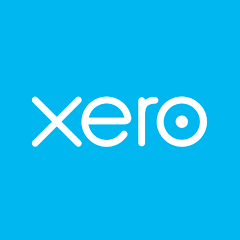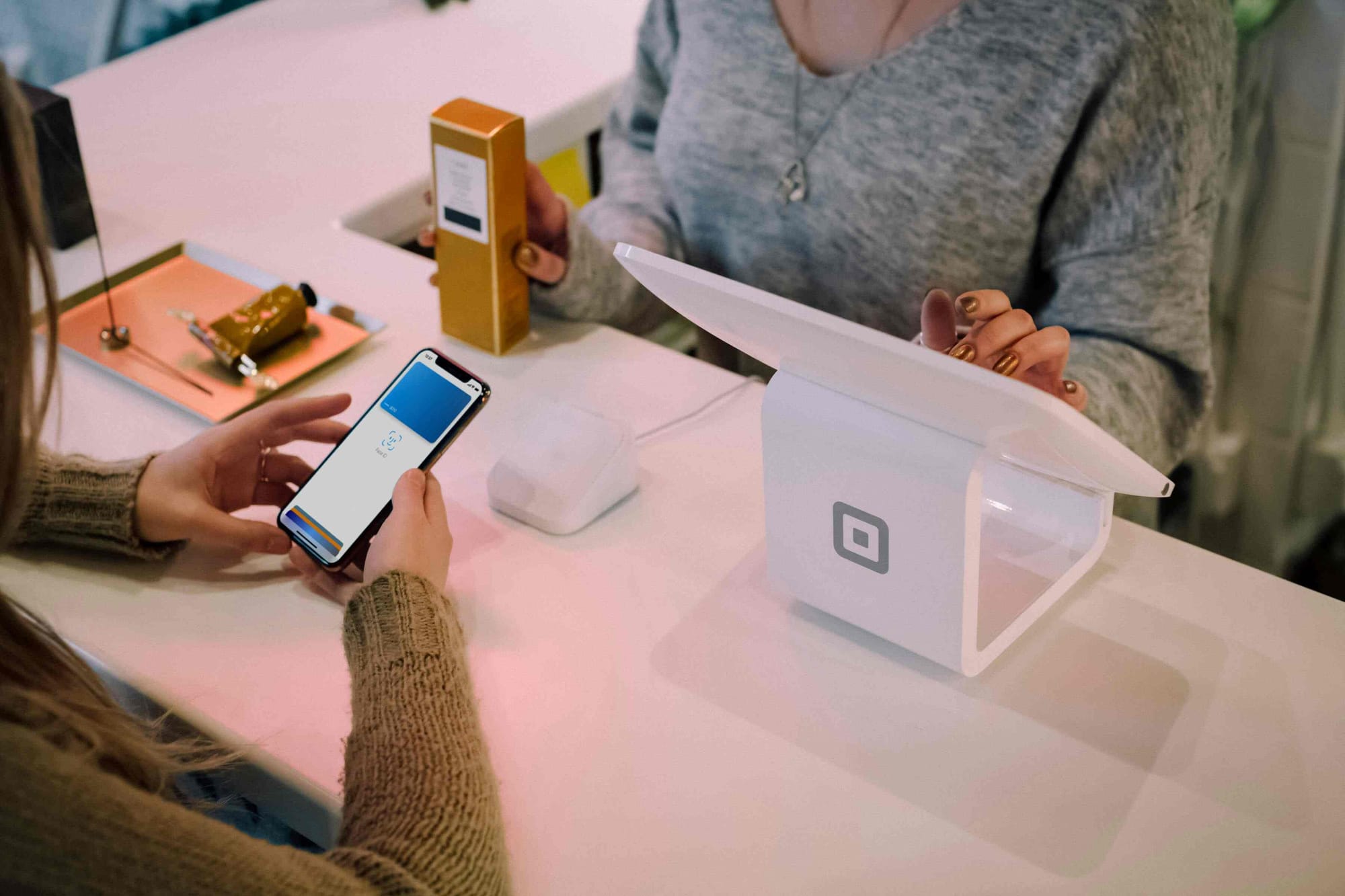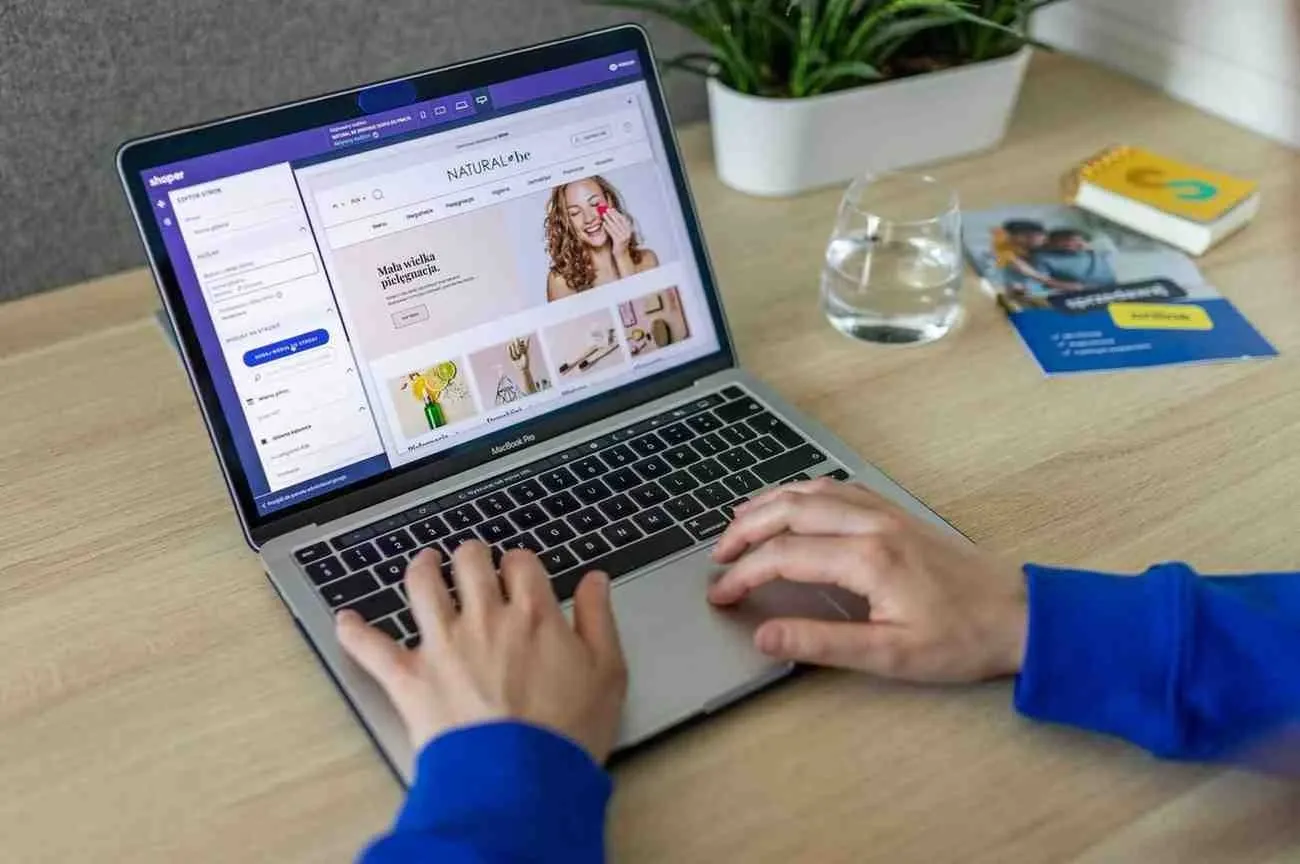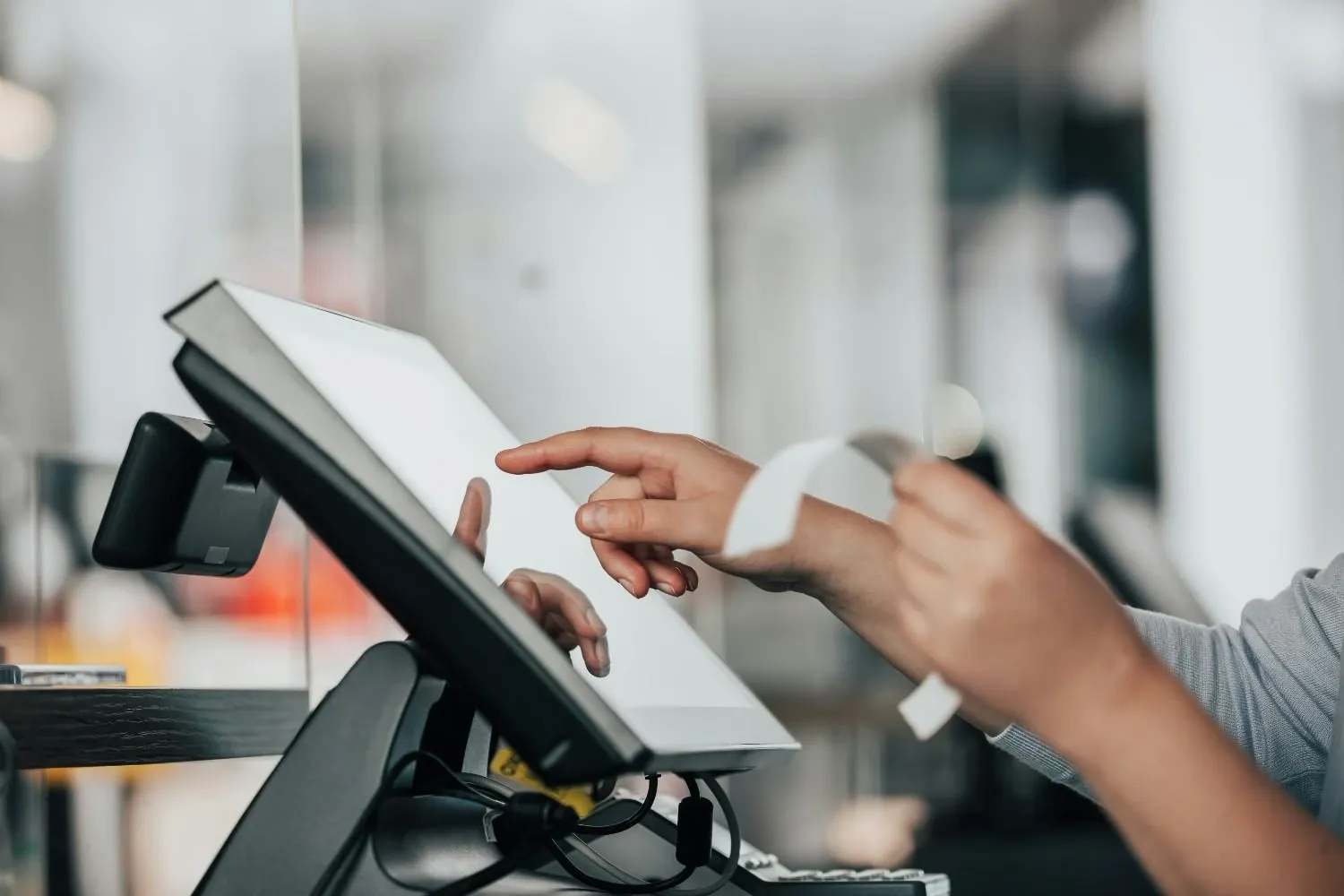QR code payments for UK businesses: A simple guide
Kingsley Ohia
-
QR code payments are becoming increasingly popular, and for good reason. Find out how your business can delight customers and slash transaction fees with QR Pay.
Recently, there has been a notable increase in the global adoption of QR code payments. The global QR code payment market reached a value of $9.98 billion in 2022 and is expected to expand at a compound annual growth rate (CAGR) of 16.9% between 2023 and 2030.
The growth is fuelled by the expanding use of smartphones and the growing demand for contactless payment solutions. China, India, and Southeast Asia lead this trend, where mobile wallets are the primary method of transaction. By 2025, 30% of all smartphone owners are expected to utilise QR codes for payments. The increasing trend highlights the necessity for businesses to adopt QR code payments to align with changing consumer preferences.
Can UK businesses take payments from customers using QR Pay? Absolutely, and there are a number of advantages to doing so. Here we cover some of the best QR Pay solutions available today and how you can ensure that QR code payments provide a slick transaction experience for your customers and become a cost-effective payment solution for your business.
What are QR codes?
A QR code (quick response code) is a simple, square, bar code-type image that can be scanned using almost any smartphone camera. In most cases, a payment QR code links to a particular web checkout page, which opens instantly in the user's mobile browser once the QR code is scanned.
How do QR code payments work?
QR code payments route customers immediately to a safe payment website. Customers use the camera on their smartphone to scan a quick-response code, which then takes them to the checkout page, where they choose whether or not to proceed with the transaction and give their approval. This contactless approach makes things more convenient while simultaneously lowering the amount of physical interaction that needs to take place.
Since the Coronavirus pandemic, contactless technologies such as QR pay, which use QR codes that allow consumers to make payments for products and services. have become more widely adopted.
How to create a QR code for payment?
Generating a QR code for payment is straightforward using platforms such as SumUp, Stripe or Wonderful. Merchants access their platform's dashboard, choose the QR code option, and input transaction data or payment links. The produced code can be printed or exhibited digitally, enabling clients to execute swift, contactless transactions.
Let’s look at step-by-step processes using SumUp and Wonderful.
What is the process for generating QR codes using SumUp?
● Install the SumUp App: Verify that the most recent version of the SumUp App is installed on your device.
● Access the QR Codes Section: Open the application, navigate to the menu, and choose the "QR Codes" option.
● Create a New QR Code: Choose "Create QR code," then enter a name and description for precise identification.
To save and print, highlight the created QR code and choose the option to print your shop display.
This QR code can be positioned in multiple areas of your business, enabling customers to scan and complete payments with ease.
Leveraging open-banking powered Wonderful:
Wonderful provides a customisable way for businesses to obtain instant bank payments with transaction fees as low as 1p per transaction.
● To initiate the process, please log in to your Wonderful account.
● To generate a QR code, please navigate to the payment section and create either a QR code or a payment link.
● To display or distribute, you may display the QR code at your point of sale or distribute the payment link to customers via SMS, email, or WhatsApp.
Customers may scan the QR code or select the link and authenticate the payment via their mobile banking application or online banking account, resulting in immediate settlement of the payment.
Companies can offer a seamless and efficient payment experience to their customers through these platforms.
Why use QR code payments to receive money?
In short, QR Pay can provide an extremely convenient way for customers to make payments in lots of different situations. They usually require little investment from merchants because no additional hardware is needed, and they are extremely flexible in how they can be presented (printed on physical surfaces or documents or displayed on a screen). This digital technology also allows merchants to offer highly popular and convenient mobile-based transaction options such as instant bank payments and digital wallets.
Also worth noting, the instant bank pay mentioned above allows merchants to slash transaction fees on sales by eliminating credit/debit cards (and the fees associated with them)—more on that below!
How safe is a QR code payment?
A QR code payment is highly secure due to the encryption of data that is transmitted during the transaction, rendering unauthorized access highly unlikely. Tokenization is also implemented by platforms such as Stripe and Checkout.com, which substitute sensitive card details with distinctive identifiers to safeguard consumer data. PCI compliance, in conjunction with this procedure, guarantees secure transactions that do not compromise user information.
Enhancing customer experience with QR Code Payments
Businesses can enhance the efficiency, simplicity, and security of customer experiences through the implementation of QR code payments. Contactless payments reduce both checkout duration and waiting periods. QR code payments enhance hygiene in the post-pandemic context by reducing physical contact. Businesses may position QR codes at strategic locations—such as tables, product tags, or digital screens—facilitating seamless customer payments without reliance on conventional point-of-sale systems.
QR code payments do more than just provide convenience; they elevate engagement through digital menus, tailored recommendations, and exclusive promotions. This enhances the buying experience and deepens customer connections. By adopting QR codes, businesses embrace innovation, responding to the growing need for contactless payments and nurturing customer loyalty and repeat visits. Embracing this technology empowers companies to enhance operational efficiency and provide a seamless, modern payment experience.
Examples of QR code payments in action
In-person sales
Merchants are now using QR Pay to accept payments from customers in face-to-face transactions. Instead of buying and maintaining cash registers or credit/debit card readers, a seller can present a QR Pay code using their mobile device or print it on products/services for customers to scan and complete commercial transactions.
An art gallery might display printed codes on individual pieces for sale, providing an extremely convenient way to pay when that hard-earned sale is made. A second-hand car dealer might generate a quick-response code for a substantial purchase so that their customer can scan and make an instant, secure bank transfer (while eliminating card processing fees for the merchant).
Remote invoicing / transaction requests
QR code payments are unique image files, so they may be quickly added to customer invoices. Customers can instantly scan the code to pay an invoice on a desktop or in paper format. Most QR code providers offer safe transaction connections to accompany digital payment codes if the user is using a mobile device.
General monetary collections and queue-busting
A QR code payment flow is a convenient option for businesses needing to receive specific amounts from customers, whether in-person or during a presentation or webinar. In market stalls or restaurants, payment codes are displayed on banners or printed on tables, allowing customers to skip asking for a bill or waiting in queue to pay.

Register today! Cancel anytime.
The main QR code payment mechanisms
These are the main ways businesses can use QR codes to take payments:
● Merchants generate permanent, reusable quick-response codes for specific amounts, which customers can scan and pay instantly.
● Merchants adding particular products / services to a digital 'basket', and then presenting a QR code to the customer to complete the purchase.
● 'Scan to shop' QRs: Where customers scan first, and then add products or services to their order before paying through their mobile device.
● 'App-to-app' QR pay: Where the customer pays by opening a particular app (such as Pay Pal) and scanning a merchant's QR code (also generated in the same app).
QR Pay vs. other contactless payments
You may wonder, with other contactless payments coming up, why does QR Pay retain its popularity? Let’s understand the comparative advantage of quick-response payments.
● Edge over NFC-led paying methods: NFC (Near Field Communication) payments involve specialised hardware, whereas QR code payments can be processed using any smartphone with a camera. This increases the accessibility of QR Pay codes.
● Cost-effectiveness: Since there are minimal hardware requirements, the cost of implementing QR Pay is often significantly less than NFC alternatives.
● Increasing consumer acceptance: The ease and convenience of this technology have made it a popular payment method among consumers. A trend that has grown since Covid-19.
Fraud prevention and security measures in QR Pay
Despite their numerous benefits, quick-response pay comes with its own set of security challenges.
Common fraud and prevention tactics
● Fake QR codes: Hackers can create bogus codes to reroute clients to an unknown third-party account and steal payments. QR phishing scammers can construct false codes that route you to a fake website to steal your personal information or download malware when clicked.
Exercise cautioun with quick-response pay links. Make sure the provider is trustworthy and doesn't need additional information to handle payments.
● Superimposed QR Pay codes: Adding multiple QRs to an original is a new approach to mislead users. Parking tickets, lunch cartons, and marketing brochures can be forged.
While companies should watch out for manipulated communication materials, consumers should utilise trusted code scanners to spot illicit activity.
● Session hijacking: Fraudsters can intercept user sessions with payment systems, leading to redirected payments or unauthorised access to sensitive information.
QR pay providers use session timeouts and unique session tokens that expire after each transaction to ensure secure communication between users and platforms.
Transaction monitoring and real-time alerts
● Real-time alerts: Currently, a significant number of QR payment platforms employ real-time alerts and transaction monitoring to identify any anomalous activity, including unforeseen transaction locations, amounts, or patterns.
● Advanced algorithms: Businesses and consumers are frequently advised to remain vigilant against emerging threats by incorporating machine learning algorithms to improve fraud detection.
Regulatory compliances
In the UK, payment service providers are required to adhere to strict security regulations, such as the Payment Services Regulations 2017, GDPR, and PCI DSS, to ensure the protection of customer data. QR payments comply with Strong Customer Authentication (SCA) as outlined in PSD2, necessitating two-factor verification methods like biometrics, PINs, or one-time passwords to bolster security and avert unauthorised transactions.
SCA mandates the use of two or more verification methods (including biometrics, PINs, or one-time passwords) prior to the authorisation of a transaction, thereby enhancing security and preventing unauthorised financial transactions.
Security measures taken by QR Pay providers
● Encryption and tokenisation: These are the most commonly used technologies to prevent fraud. Tokenisation replaces sensitive information with a unique identifier, thereby reducing the risk of data breaches, while encryption ensures the security of data transmitted between the buyer and the merchant.
● Dynamic QRs: This technology is at the forefront of QR code malpractice prevention. By using code that changes randomly with each transaction, businesses can add an extra layer of protection.
4 best QR code payment apps for UK businesses
Wonderful
The One app, from Wonderful, allows customers to scan a code, select their bank, and then authorise an instant transfer to the seller's account. There's no manual data entry, and credit / debit cards aren't involved, leading to substantial savings on transaction fees! Merchants can generate and present QR Pay or share secure payment links through messaging apps, emails, and other channels.
Fees: £9.99 / month including 1,000 transactions. (1p per transaction within and outside the bundle.)
PayPal
With PayPal's solution, the customer needs to have PayPal installed on their device. As long as they have the app, they can simply open it and scan the seller's PayPal code. Their preferred payment methods in the PayPal wallet are then ready to be used.
Fees: 1.5% + £0.10 per transaction over £10.00, and lower fees for transactions £10.00 and under.
Square
Square is an all-in-one style Point of Sale system with a number of QR code payment features. These codes can be quickly generated for different amounts and shared online or printed. Square charges up to 2.5% on some transaction methods, but is a great option for restaurants or shops wanting to allow customers to scan and then browse products, add to a basket, and pay, all from their mobile device.
Fees: 1.4% - 2.5% per transaction. Additional 25p per transaction for UK card payments.
SumUp
SumUp offers a QR code payment solution that allows businesses to create dynamic QR codes through the SumUp application. Customers may utilise their cellphones to scan these codes for the execution of safe transactions. This solution is especially advantageous for small enterprises because to its minimal setup expenses and intuitive UI.
Fees: a transaction fee of 1.69% without any monthly fees or fixed costs, providing flexibility for businesses of all sizes.
Industries that maximise the benefits of QR Pay
A wide spectrum of industries have leveraged the advantages of QR Pay not just to facilitate commercial transactions but also to use it for marketing purposes. Let’s consider the use cases across multiple sectors:
Retail and e-commerce
● Providing a smooth and fast checkout: QR codes speed up checkout and improve the customer experience, reducing cart abandonment. Brick-and-mortar shops can integrate QR Pay methods with their POS systems (point-of-sale) to facilitate seamless transactions.
● Enhancing marketing communication: Apart from facilitating digital transactions, code-based technologies are also used to direct customers towards promotional offers, personalised discounts, or product information.
Hospitality and dine-outs
● Contactless ordering and transaction solutions: Restaurants can accept contactless payments and use QR Pay menus for hygiene and convenience. Customers can scan a QR code to view the menu, order, and pay without touching a device. Additional advantages: This simple card or cashless transaction also allows customers to split bills. An ideal feature for youngsters going to a group dinner.
Travel and transportation
● QR code payment for public transit: Passengers commuting on public transport can purchase tickets using QR Pay and validate them through their smartphones. This can speed up the boarding process.
● Travel apps integration: Tour companies can integrate code-based transactions into their apps to make booking and paying for flights, hotels, and cars rentals easier.
Healthcare services
Following a medical crisis, patients would not want to spend unnecessary time at the billing counter. QR code payments offer an easy online payment system that benefits both the patient and the healthcare facility.
Convenience before and after consultation: QR Pay apps improve healthcare
experiences by providing quick access to medical records and easy appointment
booking, while integrated payment systems within healthcare platforms manage secure transactions.
Market sentiments and future trends for QR pay
Market size
Innovations in technology and heightened consumer acceptability are driving the quick-response code market. Research suggests that approximately 44.6% have used a QR code at least once, a data point that’s expected to cross 80% by 2024. Valued at around $2.9 billion in 2023, the global QR pay market is estimated to touch $4.8 billion by 2028, recording an impressive 59% growth.
Future trends
● Advanced analytics: You can use this technology to collect data and curate customised marketing campaigns.
● AR and VR integrations: QR Pay codes are compatible with AR for interactive shopping and VR for in-app purchases.
● Blending with blockchain: New age QR Pay in conjunction with the latest blockchain technology, can enhance the security and transparency of transaction data.
● Cryptocurrency: Businesses in the UK are exploring QR Pay as a means of conducting secure and efficient cryptocurrency transactions.
● Technological breakthroughs: Future-ready technologies like AI, IoT, and 5G are going to revolutionise QR code systems.
● Digital wallets and loyalty programmes: QR payments using digital wallets are becoming increasingly popular. They facilitate a more secure method for users to store and utilise their payment information. QR codes allow shoppers to easily link purchases to rewards programs, which is expected to boost customer loyalty.
● Integration on biometrics: Developing QR payment systems may integrate biometric authentication, like fingerprint or facial recognition, enhancing user security and mitigating fraud risk.
● Dynamic QR codes: Dynamic QR codes are increasingly being adopted by modern companies. Businesses can incorporate transaction data with dynamic codes to reconcile and gain customer insights. This flexibility is crucial for inventory management and customer behaviour.
FAQ
What is the maximum payment limit for QR code payments?
This depends on several factors, like the payment method and limits from the customer's bank or card provider. For large QR code payments, instant bank payments via Open Banking are ideal. Most UK banks allow payments of £20,000 or more, helping merchants save on fees.
Why are QR code payments cheaper?
In general, QR code transactions are cheaper for sellers because providers don't have to supply any substantial hardware (such as point of sale terminals / card readers). These savings can then be passed onto sellers by reducing transaction fees. If you're looking to cut costs, it's certainly worth considering QR code payment providers, especially those that support bank payments, sometimes known as 'Account-to-account payments'.
How do I generate QR codes for my business payments?
To start making use of QR code payments, businesses can use authorised payment providers (such as those mentioned above). Alternatively, it is possible to build your own solution using a QR Pay library, but this would require additional software engineering resources.
Can I integrate QR Pay with my existing payment system?
It is possible to merge QR code payments into your current point-of-sale system. Software updates or integration with third-party payment processors are common examples of this. It's important to make sure everything works together and may need some technical modifications, but there are several service providers, like Wonderful, that seamlessly implement this process.
Are QR code payments popular in the UK?
QR code payments are one of the most in-demand contactless payment methods in the UK. The COVID-19 outbreak spurred their growth as companies and consumers sought safer, touch-free payment options. Retail, hospitality, and transportation have witnessed large-scale adoption of QR Pay due to their convenience and compatibility.
How to pay from your credit card by scanning a QR code?
Simply using the camera or QR reader on your phone, you can scan the merchant's QR code in order to make a payment using your credit card. When you have finished scanning your card, a safe payment page will pop up for you to enter your card information. This process is simplified by a number of services, such as Pay By QR, which makes payment as simple as tapping a few buttons.

Register today. Cancel anytime.
on Unsplash








